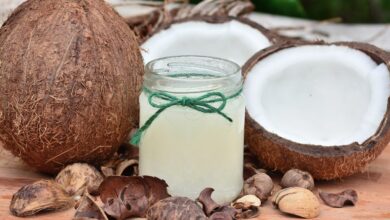
Pyotraumatic dermatitis, commonly known as “hot spots,” is a prevalent skin condition in dogs, particularly affecting breeds like Labradors that are prone to allergies and skin sensitivities. This condition is characterized by red, inflamed, and oozing lesions that often develop rapidly and cause significant discomfort. For Labrador owners, understanding the causes, spotting early symptoms, and implementing effective solutions are crucial steps in managing this condition.
What Is Pyotraumatic Dermatitis?
Pyotraumatic dermatitis is an acute, localized skin infection that often results from excessive licking, chewing, or scratching. These behaviours are typically triggered by underlying issues such as allergies, insect bites, or skin irritants. The condition can escalate quickly, as the dog’s actions further irritate the skin, leading to bacterial infections.
Hot spots are not only painful for the dog but can also become chronic if left untreated. The condition’s recurring nature underscores the importance of addressing both symptoms and underlying causes.
Health Implications
Physical Discomfort
Hot spots cause intense itching, redness, and pain. If untreated, the lesions can expand, leading to extensive skin damage and secondary infections.
Reduced Quality of Life
The constant discomfort can impact a Labrador’s overall quality of life, leading to reduced activity levels, irritability, and difficulty sleeping.
Risk of Chronic Infections
Recurring hot spots may indicate underlying health issues such as allergies, poor diet, or environmental factors. Chronic infections can weaken the immune system and increase vulnerability to other health conditions.
Spotting Pyotraumatic Dermatitis
Early detection is key to managing hot spots effectively. Labrador owners should watch for the following signs:
- Red, inflamed patches of skin that may feel warm to the touch.
- Oozing or crusting lesions often accompanied by a foul odour.
- Excessive licking, chewing, or scratching of specific areas.
- Hair loss around the affected site.
- Signs of discomfort or irritability, such as restlessness or whining.
Addressing Diet-Related Factors
Diet plays a crucial role in maintaining healthy skin and reducing the risk of pyotraumatic dermatitis. Labradors with sensitive skin may benefit from targeted nutritional interventions.
Anti-Inflammatory Diet
An anti-inflammatory diet rich in omega-3 fatty acids can help reduce skin inflammation. Ingredients like salmon, sardines, or fish oil supplements are excellent sources.
Hypoallergenic Foods
For dogs with food allergies, hypoallergenic diets that exclude common allergens like beef, chicken, or grains can alleviate skin sensitivities. Limited-ingredient diets can help identify triggers.
Adequate Hydration
Proper hydration supports skin elasticity and barrier function. Always ensure your Labrador has access to clean, fresh water.
Nutritional Supplements
Supplements such as vitamin E, zinc, and biotin can promote skin health and accelerate healing. Probiotics may also help by supporting gut health, which is linked to immune function.
Environmental Factors to Address
Environmental factors can exacerbate pyotraumatic dermatitis. Taking steps to create a dog-friendly, allergen-free environment can significantly reduce the risk.
Pest Control
Fleas, ticks, and mites are common triggers. Regular use of veterinarian-approved pest prevention measures is essential. Many dog owners prefer the natural route and there are many excellent brands in the market that produce natural flea and tick remedies.
Allergy Management
Environmental allergens such as pollen, Mold, and dust mites can irritate sensitive skin. Frequent cleaning of bedding, grooming tools, and living spaces helps minimize exposure.
Proper Grooming
Labradors have dense double coats that can trap moisture and irritants. Regular grooming, including brushing and bathing with hypoallergenic shampoos, helps maintain healthy skin.
Avoiding Irritants
Harsh chemicals in cleaning products or lawn treatments can irritate a dog’s skin. Opt for pet-safe alternatives wherever possible.
How to Help Your Dog Recover
If your Labrador develops a hot spot, swift action can prevent complications and promote healing.
Immediate Care
Clean the Area: Gently clean the lesion with a mild antiseptic solution to remove debris and bacteria.
Trim the Fur: Carefully trim the fur around the hot spot to allow air circulation and prevent further irritation.
Apply Treatment: Use veterinarian-recommended creams or sprays to reduce inflammation and fight infection or ask your holistic vet on what natural solutions you can use.
Prevent Self-Trauma
To stop the dog from licking or scratching the area, consider using an Elizabethan collar (e-collar) or a soft cone.
Consult a veterinarian
If the condition worsens or does not improve within a few days, seek veterinary care. Your vet may prescribe antibiotics, antihistamines, or other medications to manage the infection and underlying causes.
Long-Term Management
Addressing underlying issues such as allergies, dietary deficiencies, or environmental irritants is essential to prevent recurrence. Regular veterinary check-ups can help monitor your dog’s overall health.
Preventing Pyotraumatic Dermatitis
Preventing hot spots requires a proactive approach to your Labrador’s health and well-being:
- Maintain a balanced diet tailored to your dog’s specific needs.
- Provide regular exercise to support immune function and mental health.
- Keep your dog’s skin and coat clean and dry, particularly after swimming or baths.
- Monitor for early signs of skin issues and address them promptly.
- Foster a stress-free environment, as stress can weaken the immune system and exacerbate skin problems.






